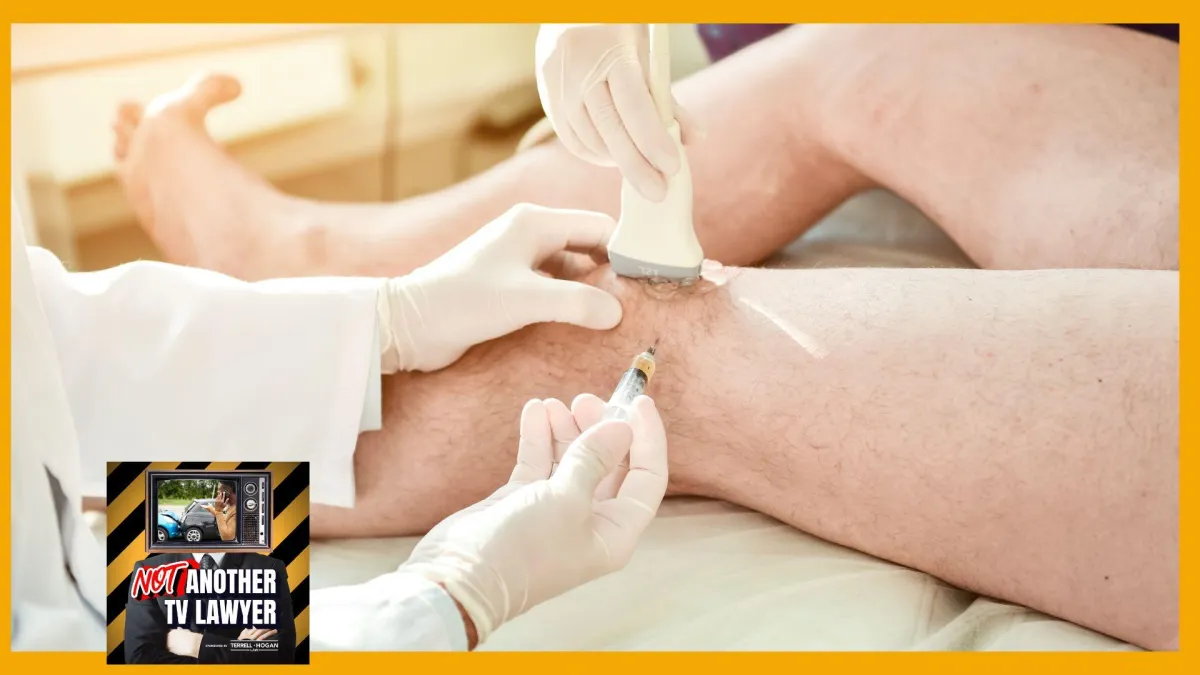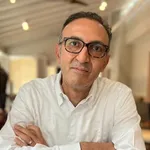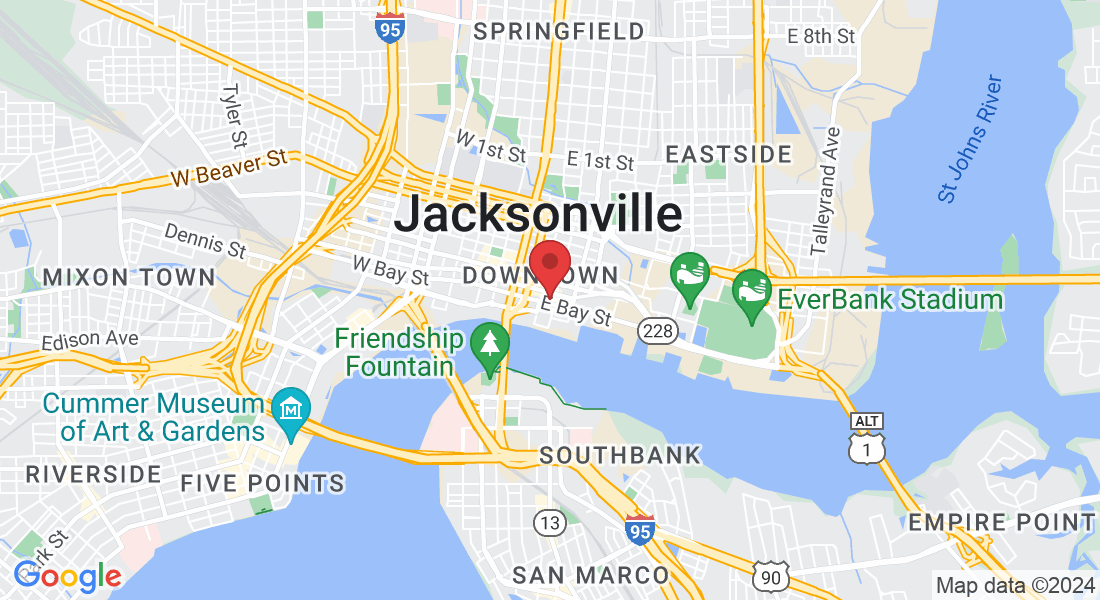— PORTFOLIO
Featured WORK
Celebrate Creativity: Showcasing our Client Work
At Mix Theory Studios, we take immense pride in showcasing the exceptional work we've done with our clients. From reimagining music albums to producing national Ad campaigns featured during the World Series, our portfolio reflects our commitment to quality and creativity. Each project is a testament to our collaborative approach and dedication to bringing our clients' visions to life. Join us in celebrating and envisioning your own project's potential.
Client Works

Tapping into the Body's Healing Ability
Minimally Invasive Alternatives for Spine and Neck Injuries
Our bodies possess an extraordinary ability to heal themselves. In the hustle and bustle of daily life, it’s easy to overlook just how remarkable this natural capacity truly is, especially when it comes to recovering from injuries such as those sustained in car accidents. Today, we explore the process that one might expect when seeking medical attention after such an incident, as shared by Dr. Arkam Rehman, an expert and double board-certified in physical medicine and rehabilitation as well as pain management.
Watch the Video
Episode 4: Accidents are a Pain in the Neck (Pain Management) with Dr. Arkam Rehman
In this episode of 'Not Another TV Lawyer,' hosts Chris Shakib and Jessica Hall discusses various topics related to neck and spinal injuries with Dr. Arkam Rehman from Jacksonville's Sunshine Spine. Dr. Rehman explains minimally invasive procedures like platelet-rich plasma injections and percutaneous discectomy, offering insights into pain management and recovery. Dr. Rehman also shares his diagnostic approach and the growing role of alternative treatments in addressing chronic pain. Tune in to learn more about how these innovative techniques can provide relief without the extended recovery times associated with traditional spinal fusion surgeries.
Video time-stamps are available at the end of this blog in the Episode Notes.
Understanding Minimally Invasive Techniques
Minimally invasive procedures are designed to treat injuries with minimal disruption to surrounding tissues. Traditional surgeries often involve large incisions, long recovery times, and can be quite painful. By contrast, minimally invasive techniques rely on small incisions, specialized tools, and innovative imaging technologies to target the injured areas precisely, resulting in reduced scarring, fewer complications, and quicker recovery.
When dealing with the spine and neck, these procedures can be especially beneficial, as traditional spinal surgeries can be complex and carry significant risks. Here are some of the most promising approaches.
1. Platelet-Rich Plasma (PRP) Therapy
Platelet-rich plasma (PRP) therapy uses a concentrated dose of a patient’s own platelets to stimulate healing in injured tissues. Platelets, which are part of the blood, contain growth factors that help repair damaged tissue. In PRP therapy, a small amount of the patient’s blood is drawn, processed to concentrate the platelets, and then injected into the area around the spine or neck where there is damage.
Research has shown that PRP can be effective in treating a variety of spine and neck conditions, including degenerative disc disease, herniated discs, and chronic neck pain. As a minimally invasive option, PRP offers patients a natural healing solution with little downtime, making it ideal for those who want to avoid surgery.
2. Stem Cell Therapy
Stem cell therapy harnesses the body’s regenerative cells, usually taken from bone marrow or adipose (fat) tissue, to help repair damaged tissue. When introduced to an injured area of the spine or neck, these stem cells can potentially differentiate into the type of cells needed to promote healing and reduce inflammation. Dr. Rehman said he uses bone marrow with his PRP therapy for patients to help kick start the body's natural ability to heal.
Stem cell therapy is still a developing field but has shown promise in treating degenerative spinal conditions, such as bulging discs and spinal arthritis. This treatment offers a non-surgical option that uses the body’s natural healing mechanisms, and because it’s minimally invasive, patients experience less pain and shorter recovery times compared to traditional surgery.
3. Laser Spine Surgery
Laser spine surgery is a minimally invasive procedure that uses laser technology to remove or reshape tissue that is pressing on nerves and causing pain. It can be used to treat a variety of conditions, including herniated discs, spinal stenosis, and arthritis of the spine. By targeting the specific area causing discomfort, laser surgery can reduce pain and restore mobility without the need for extensive incisions or long recovery times.
For patients with neck or spine injuries, this option is particularly attractive because it avoids the more complex structural disruption that can occur with traditional spine surgery. Recovery is often shorter, and many patients can resume normal activities within days.
4. Endoscopic Spine Surgery
Endoscopic spine surgery is a cutting-edge, minimally invasive procedure that involves a small incision through which an endoscope (a tiny camera) is inserted. This camera guides the surgeon as they perform the necessary repairs, allowing them to view and treat the damaged area with high precision. Endoscopic surgery can treat a range of spinal conditions, including disc herniations and spinal stenosis, and is associated with less post-operative pain and a faster return to normal activities.
With less tissue disruption and a lower risk of complications, endoscopic surgery is an ideal solution for those looking to minimize recovery time and avoid traditional spinal surgery.
5. Radiofrequency Ablation (RFA)
Radiofrequency ablation (RFA) uses heat generated by radio waves to target and disable specific nerves that send pain signals to the brain. This minimally invasive procedure is often used to treat chronic pain in the neck and back, particularly for patients with arthritis in the facet joints of the spine.
During the procedure, a needle is guided to the affected nerve, and radio waves create a small, controlled burn on the nerve, temporarily reducing its ability to send pain signals. RFA can provide relief that lasts several months to a year, allowing patients to reduce their reliance on medications and enjoy a better quality of life.
6. Spinal Cord Stimulation (SCS)
For those who suffer from chronic pain due to spinal injuries or nerve damage, spinal cord stimulation (SCS) can offer relief. SCS involves implanting a small device under the skin that sends electrical pulses to the spinal cord. These pulses modify pain signals before they reach the brain, reducing the perception of pain.
SCS is generally considered for patients who haven’t found relief through other treatments and can provide long-term pain management with minimal invasiveness. With advancements in technology, these stimulators are now smaller and more effective, offering customizable pain relief for those with chronic spine-related pain.
The Road to Recovery Starts with a Thorough Examination
Minimally invasive treatments for spine and neck injuries have given patients new options to heal without the lengthy recovery times and potential complications associated with traditional surgery. For those seeking alternatives to conventional surgery, these options represent a new frontier of pain relief and recovery, but it is important to find the right physician and get a thorough examination.
When a new patient comes to his office saying, "Hey, I've been in a car accident," Dr. Rehman emphasizes the importance of a comprehensive evaluation. According to Dr. Rehman, the course of action varies significantly from patient to patient. However, the use of X-rays is a critical starting point.
“X-rays are invaluable,” Dr. Rehman states, reflecting on his experience. During his tenure at Hemshaw Orthopedics in Massachusetts, he discovered that “looking at them with your eyes is the critical thing.” X-rays offer a wealth of information that can greatly aid in the diagnosis and treatment planning for each unique situation.
Dr. Rehman assures that besides the all-important X-rays, there’s a tailored approach to each case, ensuring personalized care for optimum recovery. Although the specifics will depend on the individual’s condition and concerns, every assessment is designed with the intent to leverage the body’s inherent healing capabilities, supported by medical expertise.
Embracing the Healing Journey
As these treatments continue to evolve, patients with spine and neck injuries can look forward to a future where the body’s own mechanisms are at the core of recovery. These inherent capabilities are a testament to the body's prowess in regenerating and repairing itself, turning potential obstacles and setbacks into opportunities for growth and renewal.
In conclusion, the more that medical interventions, therapies and technologies work in synergy with our body, the more each patient will receive the most comprehensive care and the possibility of a healthier, pain-free life with minimal disruption. Trust in the power of your body; it truly is astonishing.
More about our Guest
Dr. Arkam Rehman

Dr. Arkam Rehman is Double Board Certified in Pain & Rehabilitation Medicine and an experienced Regenerative Medicine MD physician who has been blessed to have a made a difference in countless people’s lives.
Dr. Rehman has trained at esteemed & reputable residency programs of Cook County Hospital Internal Medicine in Chicago, Mount Sinai Medical Center Neurology in New York, and Marianjoy Rehabilitation Hospital’s Physical Medicine & Rehabilitaton residency program in the Chicago area. He completed his Physical Medicine and Rehabilitation Residency at the Marianjoy Rehabilitation Hospital affiliated residency program where he was the Chief Resident in his final year of training, managing resident physicians from 4 different residency programs.
Dr. Rehman is an Exceptional Physician who has been using Advanced Treatments that help you get your life back with rare exceptions. His focus is helping his patients feel better without surgery and uses cutting edge techniques to help with Headaches/Migraines, Neck & Lower Back Pain from Disc and Arthritis issues of the Spine, Hip, Knee, Shoulder and other Nerve and Joint problems. Erectile Dysfunction & Other Regenerative Medicine & Patient Wellness focused Medical Practice.
Visit https://sunshinespine.com for more information about Dr. Arkam Rehman and his practice in Jacksonville and Orange Park, Florida.
Episode Notes:
Understanding Minimally Invasive Spine Treatments with Dr. Arkam Rehman
Tune in to learn more about how these innovative techniques can provide relief without the extended recovery times associated with traditional spinal fusion surgeries.
00:00 Introduction to Not Another TV Lawyer
00:28 Meet Dr. Arkam Rehman
01:06 Understanding Car Accident Injuries
02:02 Minimally Invasive Procedures Explained
04:38 Recovery and Alternatives to Spinal Fusion
07:25 Diagnosing and Treating Spinal Pain
12:59 Facet Joints and Their Role in Pain
18:48 Patient Referrals and Initial Consultations
23:35 The Power of Platelet Rich Plasma (PRP)
27:48 Conclusion and Contact Information

Tapping into the Body's Healing Ability
Minimally Invasive Alternatives for Spine and Neck Injuries
Our bodies possess an extraordinary ability to heal themselves. In the hustle and bustle of daily life, it’s easy to overlook just how remarkable this natural capacity truly is, especially when it comes to recovering from injuries such as those sustained in car accidents. Today, we explore the process that one might expect when seeking medical attention after such an incident, as shared by Dr. Arkam Rehman, an expert and double board-certified in physical medicine and rehabilitation as well as pain management.
Watch the Video
Episode 4: Accidents are a Pain in the Neck (Pain Management) with Dr. Arkam Rehman
In this episode of 'Not Another TV Lawyer,' hosts Chris Shakib and Jessica Hall discusses various topics related to neck and spinal injuries with Dr. Arkam Rehman from Jacksonville's Sunshine Spine. Dr. Rehman explains minimally invasive procedures like platelet-rich plasma injections and percutaneous discectomy, offering insights into pain management and recovery. Dr. Rehman also shares his diagnostic approach and the growing role of alternative treatments in addressing chronic pain. Tune in to learn more about how these innovative techniques can provide relief without the extended recovery times associated with traditional spinal fusion surgeries.
Video time-stamps are available at the end of this blog in the Episode Notes.
Understanding Minimally Invasive Techniques
Minimally invasive procedures are designed to treat injuries with minimal disruption to surrounding tissues. Traditional surgeries often involve large incisions, long recovery times, and can be quite painful. By contrast, minimally invasive techniques rely on small incisions, specialized tools, and innovative imaging technologies to target the injured areas precisely, resulting in reduced scarring, fewer complications, and quicker recovery.
When dealing with the spine and neck, these procedures can be especially beneficial, as traditional spinal surgeries can be complex and carry significant risks. Here are some of the most promising approaches.
1. Platelet-Rich Plasma (PRP) Therapy
Platelet-rich plasma (PRP) therapy uses a concentrated dose of a patient’s own platelets to stimulate healing in injured tissues. Platelets, which are part of the blood, contain growth factors that help repair damaged tissue. In PRP therapy, a small amount of the patient’s blood is drawn, processed to concentrate the platelets, and then injected into the area around the spine or neck where there is damage.
Research has shown that PRP can be effective in treating a variety of spine and neck conditions, including degenerative disc disease, herniated discs, and chronic neck pain. As a minimally invasive option, PRP offers patients a natural healing solution with little downtime, making it ideal for those who want to avoid surgery.
2. Stem Cell Therapy
Stem cell therapy harnesses the body’s regenerative cells, usually taken from bone marrow or adipose (fat) tissue, to help repair damaged tissue. When introduced to an injured area of the spine or neck, these stem cells can potentially differentiate into the type of cells needed to promote healing and reduce inflammation. Dr. Rehman said he uses bone marrow with his PRP therapy for patients to help kick start the body's natural ability to heal.
Stem cell therapy is still a developing field but has shown promise in treating degenerative spinal conditions, such as bulging discs and spinal arthritis. This treatment offers a non-surgical option that uses the body’s natural healing mechanisms, and because it’s minimally invasive, patients experience less pain and shorter recovery times compared to traditional surgery.
3. Laser Spine Surgery
Laser spine surgery is a minimally invasive procedure that uses laser technology to remove or reshape tissue that is pressing on nerves and causing pain. It can be used to treat a variety of conditions, including herniated discs, spinal stenosis, and arthritis of the spine. By targeting the specific area causing discomfort, laser surgery can reduce pain and restore mobility without the need for extensive incisions or long recovery times.
For patients with neck or spine injuries, this option is particularly attractive because it avoids the more complex structural disruption that can occur with traditional spine surgery. Recovery is often shorter, and many patients can resume normal activities within days.
4. Endoscopic Spine Surgery
Endoscopic spine surgery is a cutting-edge, minimally invasive procedure that involves a small incision through which an endoscope (a tiny camera) is inserted. This camera guides the surgeon as they perform the necessary repairs, allowing them to view and treat the damaged area with high precision. Endoscopic surgery can treat a range of spinal conditions, including disc herniations and spinal stenosis, and is associated with less post-operative pain and a faster return to normal activities.
With less tissue disruption and a lower risk of complications, endoscopic surgery is an ideal solution for those looking to minimize recovery time and avoid traditional spinal surgery.
5. Radiofrequency Ablation (RFA)
Radiofrequency ablation (RFA) uses heat generated by radio waves to target and disable specific nerves that send pain signals to the brain. This minimally invasive procedure is often used to treat chronic pain in the neck and back, particularly for patients with arthritis in the facet joints of the spine.
During the procedure, a needle is guided to the affected nerve, and radio waves create a small, controlled burn on the nerve, temporarily reducing its ability to send pain signals. RFA can provide relief that lasts several months to a year, allowing patients to reduce their reliance on medications and enjoy a better quality of life.
6. Spinal Cord Stimulation (SCS)
For those who suffer from chronic pain due to spinal injuries or nerve damage, spinal cord stimulation (SCS) can offer relief. SCS involves implanting a small device under the skin that sends electrical pulses to the spinal cord. These pulses modify pain signals before they reach the brain, reducing the perception of pain.
SCS is generally considered for patients who haven’t found relief through other treatments and can provide long-term pain management with minimal invasiveness. With advancements in technology, these stimulators are now smaller and more effective, offering customizable pain relief for those with chronic spine-related pain.
The Road to Recovery Starts with a Thorough Examination
Minimally invasive treatments for spine and neck injuries have given patients new options to heal without the lengthy recovery times and potential complications associated with traditional surgery. For those seeking alternatives to conventional surgery, these options represent a new frontier of pain relief and recovery, but it is important to find the right physician and get a thorough examination.
When a new patient comes to his office saying, "Hey, I've been in a car accident," Dr. Rehman emphasizes the importance of a comprehensive evaluation. According to Dr. Rehman, the course of action varies significantly from patient to patient. However, the use of X-rays is a critical starting point.
“X-rays are invaluable,” Dr. Rehman states, reflecting on his experience. During his tenure at Hemshaw Orthopedics in Massachusetts, he discovered that “looking at them with your eyes is the critical thing.” X-rays offer a wealth of information that can greatly aid in the diagnosis and treatment planning for each unique situation.
Dr. Rehman assures that besides the all-important X-rays, there’s a tailored approach to each case, ensuring personalized care for optimum recovery. Although the specifics will depend on the individual’s condition and concerns, every assessment is designed with the intent to leverage the body’s inherent healing capabilities, supported by medical expertise.
Embracing the Healing Journey
As these treatments continue to evolve, patients with spine and neck injuries can look forward to a future where the body’s own mechanisms are at the core of recovery. These inherent capabilities are a testament to the body's prowess in regenerating and repairing itself, turning potential obstacles and setbacks into opportunities for growth and renewal.
In conclusion, the more that medical interventions, therapies and technologies work in synergy with our body, the more each patient will receive the most comprehensive care and the possibility of a healthier, pain-free life with minimal disruption. Trust in the power of your body; it truly is astonishing.
More about our Guest
Dr. Arkam Rehman

Dr. Arkam Rehman is Double Board Certified in Pain & Rehabilitation Medicine and an experienced Regenerative Medicine MD physician who has been blessed to have a made a difference in countless people’s lives.
Dr. Rehman has trained at esteemed & reputable residency programs of Cook County Hospital Internal Medicine in Chicago, Mount Sinai Medical Center Neurology in New York, and Marianjoy Rehabilitation Hospital’s Physical Medicine & Rehabilitaton residency program in the Chicago area. He completed his Physical Medicine and Rehabilitation Residency at the Marianjoy Rehabilitation Hospital affiliated residency program where he was the Chief Resident in his final year of training, managing resident physicians from 4 different residency programs.
Dr. Rehman is an Exceptional Physician who has been using Advanced Treatments that help you get your life back with rare exceptions. His focus is helping his patients feel better without surgery and uses cutting edge techniques to help with Headaches/Migraines, Neck & Lower Back Pain from Disc and Arthritis issues of the Spine, Hip, Knee, Shoulder and other Nerve and Joint problems. Erectile Dysfunction & Other Regenerative Medicine & Patient Wellness focused Medical Practice.
Visit https://sunshinespine.com for more information about Dr. Arkam Rehman and his practice in Jacksonville and Orange Park, Florida.
Episode Notes:
Understanding Minimally Invasive Spine Treatments with Dr. Arkam Rehman
Tune in to learn more about how these innovative techniques can provide relief without the extended recovery times associated with traditional spinal fusion surgeries.
00:00 Introduction to Not Another TV Lawyer
00:28 Meet Dr. Arkam Rehman
01:06 Understanding Car Accident Injuries
02:02 Minimally Invasive Procedures Explained
04:38 Recovery and Alternatives to Spinal Fusion
07:25 Diagnosing and Treating Spinal Pain
12:59 Facet Joints and Their Role in Pain
18:48 Patient Referrals and Initial Consultations
23:35 The Power of Platelet Rich Plasma (PRP)
27:48 Conclusion and Contact Information
Ready to Scale? Connect with us.
About Mix Theory Studios
Mix Theory Studios is a content design studio and multimedia production company. We offer a variety of services that supports artists, creators and businesses to produce and distribute high quality audio and video content.
CONTACT
(904) 580-5763











